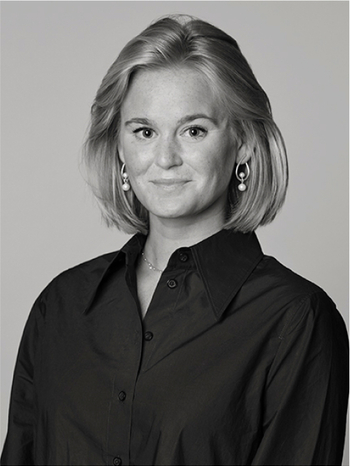Berta Hansson
Berta Hansson, Portrait
Signed BH. Watercolor on paper, image 17 x 12 cm.
Not examined out of frame.
Kirjallisuus
Berta Hansson, "Mina ungar - dagbok från en byskola", 1979, ill. p 20.
Muut tiedot
Berta Hansson was born in 1910. She studied to be a primary school teacher and worked in Fredrika kyrkby in southern Lapland in Sweden. Her great interest was watercolor painting and drawing. The motif circle consisted of portraits of schoolchildren and landscapes.
In 1941, the writer Elsa Björkman-Goldschmidt came to visit Fredrika and learned about the 31-year-old teacher's great passion. But their meeting was a total coincidence. Elsa Björkman-Goldschmidt arrived by bus to Fredrika, one winter evening to give a talk - but no one met her.
"Is there anyone here from the lecture association?", Elsa Björkman-Goldschmidt called out straight into the winter darkness. Berta Hansson, who was standing at the bus stop, picked up the writer and drove her to school. There she saw Berta's drawings and watercolours, and when Elsa Björkman-Goldschmidt returned to Stockholm, she had a thick bundle with her. Their chance meeting paved the way for Berta Hansson's first solo exhibition and breakthrough in 1943.
Berta Hansson made her debut on September 15, 1943 at the prestigious Galleri Färg och Form in Stockholm, which at the time was located at Malmtorgsgatan 10. Berta Hansson exhibited portraits of her school students as well as melancholy landscape depictions. The works had been taken from her studio in Fredrika Kyrkby. It is likely that her student portrait, "Schoolboy" from 1943 was shown at this exhibition. The debut at Färg och Form attracted attention. Critics and audiences drew parallels to Helene Schjerfbeck's sensitive and fragile portraits.
Dagens Nyheter reviewed the former public school teacher's artwork.
"Among this week's debutantes, Berta Hansson at Färg och Form attracts the most interest. She is a primary school teacher in Fredrika kyrkby in Västerbotten county and she has taken the motifs from her everyday environment.
In "Cold winter morning in the lapland" the church village has been given an almost pedagogically clear and visible presentation with the houses in a row and the smoke from the chimneys rising straight up into the cold air. In a whole series of small paintings, "In the school desk", "Morning prayer" etc., daily life at school is depicted in a familiar and convincing way. No art is completely independent of another and it is obvious that Berta Hansson was influenced by Finnish art; a synthetic portrait sketch like "Yngve", for example, would be unthinkable without Helene Schjerfbeck as a role model.
But that does not rule out that Berta Hansson experienced her environment intensely and personally and that she was also able to portray her experiences in a way that you feel is natural and real to her. The angular and gnarled child types have a lot of character - the hands are sometimes almost caricaturally exaggerated - and the figures are often excellently incorporated into the picture surface, e.g. "Girl in thoughts". In "Playing children", the movements of the child employed in the woven wadmal game have really been woven together into a pattern. "Sibling," "Old Woman," etc., also show feminine sensibility and taste, and some small landscape sketches, ""My Home in the Mist," "Toward the Mountains," "From the Lapland," etc., have a simplicity and grandeur in their grasp that is strange .”
Excerpt from review by Yngve Berg in Dagens Nyheter, 23 September 1943.
After the debut, Berta Hansson moved to Stockholm permanently, to an apartment with the Stiftelsen Konstnärshem at Hornsgatspuckeln, to devote herself wholeheartedly to her new career. She stayed in Stockholm for the rest of her life, where she also established a close association with female art pioneers such as Maj Bring, Vera Nilsson, Siri Derkert and Ninnan Santesson. Berta Hansson also made painting trips to, among others, France, Italy, Egypt and southern Africa, when the peace after the Second World War opened opportunities for trips abroad.
Berta Hansson created, alongside painting and drawing, large textile works for public environments. She was in demand and hired by significant institutions. Today, her textile works can be found in the collections at
Länsstyrelsen, Radiohuset in Stockholm, Stockholm School of Economics, the Karolinska University Hospital, Postnord in Tomteboda and Umeå University.
Berta Hansson exhibited regularly at, among others, Galleri Färg och Form, Konstnärshuset and at Galleri Doktor Glas during her life in Stockholm. In 2010, Berta Hansson would have turned 100 years old and then the Art Academy at Fredsgatan 12 showed a large retrospective exhibition with her drawings, watercolors, graphics and textiles. In connection, a book about her life's work was published, written by Gunilla Carlstedt and Christian Åkerlund.
Berta Hansson's retrospective exhibition was reviewed in Dagens Nyheter 14 January 2010:
"I'm beginning to fear that you have a soul Miss Hansson - albeit never so small." With these words, the teacher Otte Sköld judged his student Berta Hansson's paintings in the spring of 1940. For her, the ambiguous comment became an encouragement to continue creating.
Seventy years later, one is rather surprised that any female artist managed to get ahead in the patriarchal, hierarchical art climate of the time.
In time, however, Berta Hansson received some vindication. But it has taken until now, 16 years after her death, before the time was considered ripe for a major retrospective. This at the Art Academy in Stockholm. The early paintings are characterized by a toned-down, sensitive color that sometimes brings to mind the art of Helene Schjerfbeck - although Berta Hansson herself defended herself against the comparison. "
Excerpt from text in DN Kultur by Bo Madestrand 14 January 2010.
Berta Hansson is represented with twelve works at the Moderna Museet, as well as at the National Museum and Örebro County Museum.



































